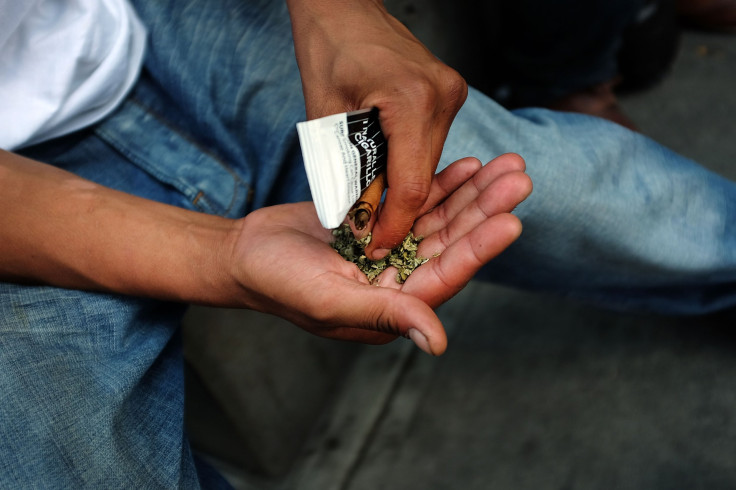Synthetic Marijuana Overdoses Skyrocket In Florida; Why Are These Drugs Still Legal?

Bodies strewn across public benches and lawns tell an unsettling tale. People who regularly visit the parks in several cities in Florida resemble something straight out of George A. Romero flick, but are more lethargic than any flesh-eating zombie on The Walking Dead. Welcome to the Sunshine State, where health officials and law enforcement are working around the clock to quell a recent spike in overdoses caused by synthetic marijuana, commonly known as K2 or Spice.
“We have noticed a serious uptick of Spice incidents lately that have turned into medical calls and it’s become a serious drain on resources for the police department, for the fire department, and then in turn for doctors, say, at Morton Plant Hospital where the patients end up,” police spokesman Rob Shaw told WTVT. “You wonder when somebody’s going to have a heart attack and die from some of these substances.”
Officials in Florida are not only battling an unprecedented upswing in overdoses caused by laboratory weed, they are also inundated with residents complaining about seemingly homeless people acting erratically and becoming violent. Authorities in Tampa reported a similar trend in overdoses linked to a bad batch of Spice just last week. Investigators are currently working to decide if the overdoses around Clearwater are related.
Synthetic marijuana is a mixture of herbs and manmade chemicals known as cannabinoids. Although most of these products are labeled unsafe for human consumption, teenagers around the United States continue to experiment with them because they believe something you can buy legally at a gas station is a safer alternative for actual weed. They are marketed as herbal incense, but kids aren’t using them to make their rooms smell better.
Products like Spice and K2 first started appearing in the U.S. in November 2008, according to the Drug Enforcement Administration. Since then, the number of teens walking into gas stations and corner stores to pick up these drugs for legal purchase has increased significantly. The Centers for Disease Control and Prevention says that calls to poison control centers involving synthetic pot grew by 229 percent between 2014 and 2015.
What makes K2 and similar drugs so dangerous and hard to criminalize is that we can’t keep track of the combination of chemicals that are in them. They are synthesized in clandestine labs that ship the product around the world. So why not just make synthetic marijuana illegal on a federal basis? Simply put, the DEA can’t keep up with manufacturers.
The agency placed five of the most common synthetic cannabinoids found in K2 on the list of Schedule I drugs on March 1, 2011. And in 2012 President Barack Obama signed the Synthetic Drug Abuse Prevention Act, which permanently banned 26 of these drugs — all versions known at that time. Currently, 43 states have taken legal action to control one or more of the manmade cannabinoids.
Whenever one of the synthetic substances is banned, however, 10 more seem to pop up in its place. More than 150 were reported in 2013 alone.
Samuel Banister, a postdoctoral research fellow from Stanford University, calls laws that punish the use and sale of designer drugs a “legal gray area.” But he says there are laws in place designed to outlaw chemicals that are found in synthetic marijuana once they are identified. The Federal Analogue Act allows any chemical substantially similar to an existing controlled substance to be listed as Schedule I or II. Proving one drug is similar to the other is another matter entirely.
“Perhaps it is time we stopped reactively banning new synthetic cannabinoids and considered more innovative regulatory approaches,” Banister and his colleagues, Iain McGregor and Roy Gerona, explained in an article for The Conversation. They recommend an approach similar to the one used by the pharmaceutical industry: To prevent competitors from making similar versions of a drug, patents include so-called prophetic structures that take into account molecules with similar effects.



























